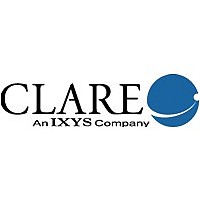M-8888-01P Clare, M-8888-01P Datasheet - Page 3

M-8888-01P
Manufacturer Part Number
M-8888-01P
Description
IC TRANSCEIVER DTMF CMOS 20-DIP
Manufacturer
Clare
Datasheet
1.M-8888-01P.pdf
(14 pages)
Specifications of M-8888-01P
Function
DTMF Transceiver
Number Of Circuits
1
Voltage - Supply
4.75 V ~ 5.25 V
Current - Supply
10mA
Power (watts)
78.75mW
Operating Temperature
-40°C ~ 85°C
Mounting Type
Through Hole
Package / Case
*
Includes
Automatic Tone Burst Mode, Call Progress Mode
Lead Free Status / RoHS Status
Lead free / RoHS Compliant
Interface
-
Rev. 1
switched capacitor bandpass filters with bandwidths
that correspond to the low and high group frequencies
listed in the Tone Encoding/Decoding below. The low
group filter incorporates notches at 350 and 440 Hz,
providing excellent dial tone rejection. Each filter out-
put is followed by a single-order switched capacitor fil-
ter that smoothes the signals prior to limiting. Limiting
is performed by high-gain comparators with hysteresis
to prevent detection of unwanted low-level signals.
The comparator outputs provide full-rail logic swings
at the incoming DTMF signal frequencies.
A decoder employs digital counting techniques to
determine the frequencies of the incoming tones, and
to verify that they correspond to standard DTMF fre-
quencies. A complex averaging algorithm protects
against tone simulation by extraneous signals (such
as voice), while tolerating small deviations in frequen-
cy. The algorithm provides an optimum combination of
immunity to talkoff with tolerance to interfering fre-
quencies (third tones) and noise. When the detector
recognizes the presence of two valid tones (referred to
as signal condition), the early steering (ESt) output
goes to an active state. Any subsequent loss of signal
condition will cause ESt to assume an inactive state.
Steering Circuit:
Before a decoded tone pair is registered, the receiver
checks for a valid signal duration (referred to as “char-
acter recognition condition”). This check is performed
Tone Encoding/Decoding
F
0 = logic low, 1 = logic high
LOW
697
697
697
770
770
770
852
852
852
941
941
941
697
770
852
941
F
1209
1336
1477
1209
1336
1477
1209
1336
1477
1336
1209
1477
1633
1633
1633
1633
HIGH
Digit
D
1
2
3
4
5
6
7
8
9
0
*
#
A
B
C
D3
0
0
0
0
0
0
0
1
1
1
1
1
1
1
1
0
D2
0
0
0
1
1
1
1
0
0
0
0
1
1
1
1
0
D1
0
1
1
0
0
1
1
0
0
1
1
0
0
1
1
0
D0
1
0
1
0
1
0
1
0
1
0
1
0
1
0
1
0
www.clare.com
Basic Steering Circuit
by an external RC time constant driven by ESt. A logic
high on ESt causes V
above) to rise as the capacitor discharges. Provided
that the signal condition is maintained (ESt remains
high) for the validation period (t
threshold (V
tone pair, latching its corresponding 4-bit code (see
the Tone Encoding/Decoding on left) into the receive
data register.
At this point the StGT output is activated and drives V
to V
remains high. Finally, after a short delay to allow the
output latch to settle, the delayed steering output flag
goes high, signaling that a received tone pair has
been registered. It is possible to monitor the status of
the delayed steering flag by checking the appropriate
bit in the status register. If interrupt mode has been
selected, the IRQ/CP pin will pull low when the
delayed steering flag is active.
The contents of the output latch are updated on an
active delayed steering transition. This data is pre-
sented to the 4-bit bidirectional data bus when the
receive data register is read. The steering circuit works
in reverse to validate the interdigit pause between sig-
nals. Thus, as well as rejecting signals too short to be
considered valid, the receiver will tolerate signal inter-
ruptions (dropout) too short to be considered a valid
pause. This capability, together with the ability to
select the steering time constants externally, allows
the designer to tailor performance to meet a wide vari-
ety of system requirements.
Guard Time Adjustment: The simple steering circuit
shown in the Basic Steering Circuit above is adequate
for most applications. Component values are chosen
according to the formula:
DD
. StGT continues to drive high as long as ESt
TSt
) of the steering logic to register the
t
REC
T
C
ID
(see the Basic Steering Circuit
= t
= t
DA
DP
+ t
+ t
GTP
GTA
GTP
), V
C
reaches the
M-8888
3
C















